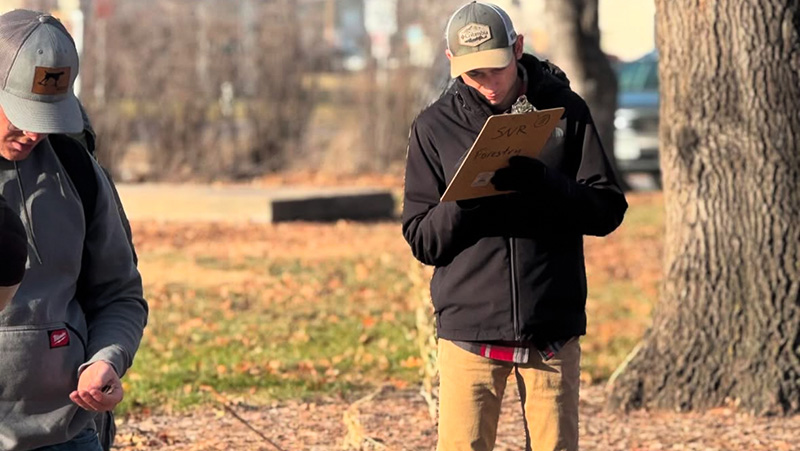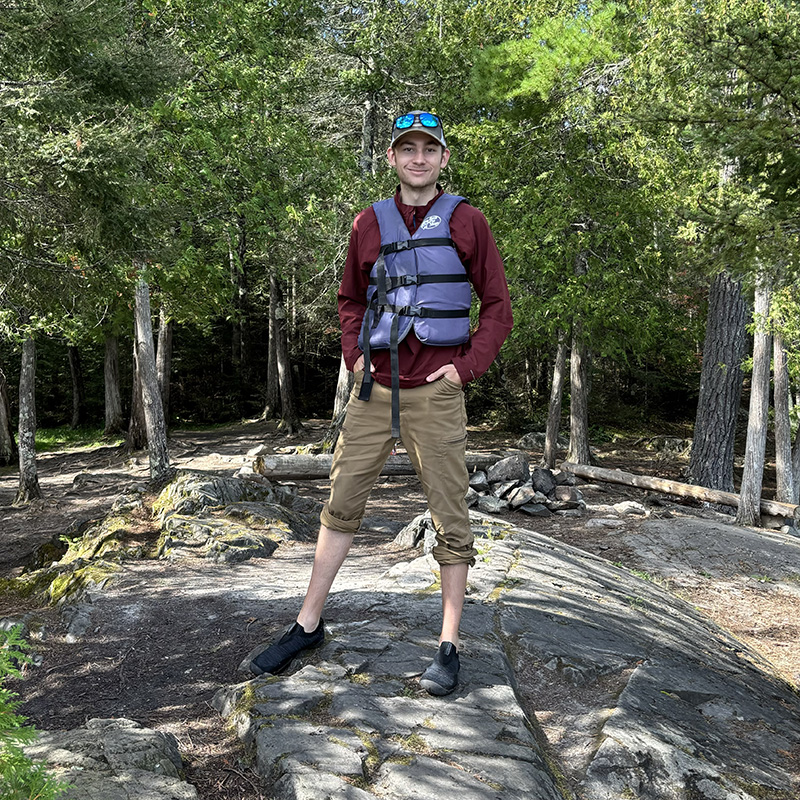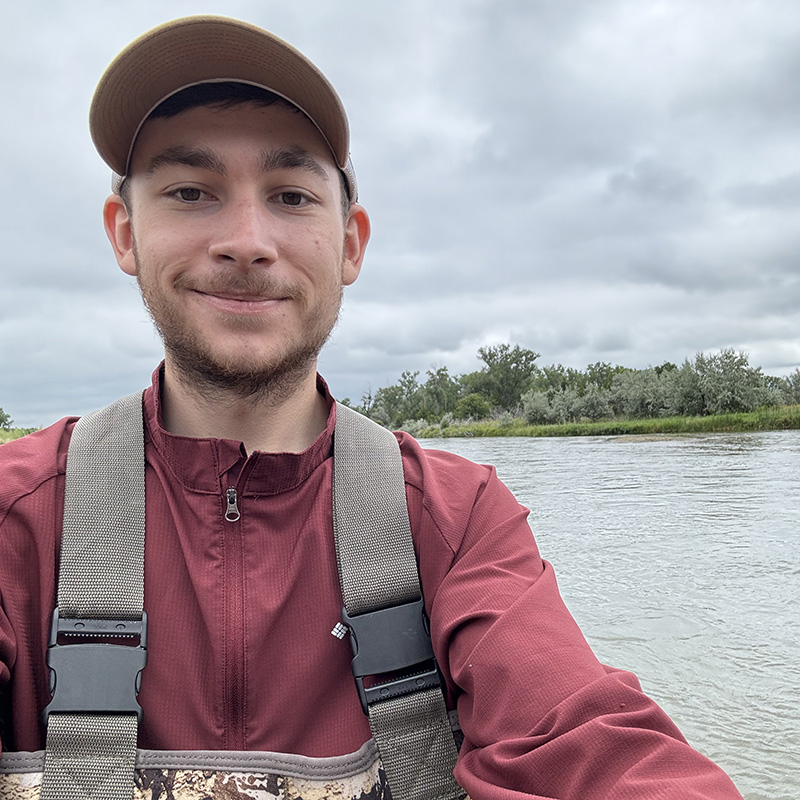Posted: 3/30/2025
Simon one of a kind this semester with double degree

By Ronica Stromberg
Caden Simon learned something surprising as he began final steps to graduate from the School of Natural Resources in May. His academic advisor, Sara Winn, told him he was the only student graduating this semester with majors in both environmental science and regional and community forestry.
Knowing how closely related the two majors were, Simon wondered why more students didn't double major in them the way he did.
"There's a lot of classes that can overlap, and if anybody else was thinking about double majoring in these two fields, I'd say that I think you should do it," he said. "Even if you're not very interested in one topic, it does pertain to the other one and gives you a little bit of a different mindset about learning these different topics."
Simon had developed interest in both the environment and trees through childhood experiences in the Boy Scouts, family vacations to national parks and three years of work as a Treetop Village® attraction attendant at the Arbor Day Farm in Nebraska City. He came to the university from Plattsmouth with a strong interest in countering environmental pollution, he said.
He started off as a biological systems engineer, planning to do environmental remediation, but soon discovered environmental science was closer to his interests. He switched to the School of Natural Resources and an environmental science major his sophomore year. He then added forestry as a second major his junior year.
"So, I'm trying to scrunch in another major like at the last minute, just because I was like, 'Man, I really like trees, too. I got to do something about that,'" he said. "So, I tacked that on, and now I'm really happy about where I'm at."

In the environmental science major, he chose a soil emphasis over a water emphasis and soon heard in a soil health class about a job opportunity. He became an Earth Team volunteer at the Kellogg Soil Survey Center, receiving pay through the university. After he had worked at the soil lab a while, the staff recommended he apply as a student pathways intern for work over the summer. With his contacts at the Kellogg Soil Survey Center, he landed a position training to be a soil scientist at the Natural Resources Conservation Service.
In early May 2024, he began job shadowing soil scientists between classes about 12 hours a week. He then worked full time over the summer.
Simon and a soil scientist, Casey Latta, probed and mapped soils to verify the soils met the description given when first mapped. The soils did.
In Lincoln, he took part in a project about dynamic soil properties on a crop field undergoing research. Researchers had put biochar, a charcoal made by heating dead plants and other matter, in one spot and biosolids in another spot. Simon and Latta compared the difference between the two spots to gather soil data for the university as well as the National Soil Information System database.
In a nearby field, Simon and other soil scientists ran field tests like hydraulic conductivity and took soil samples to test. Simon learned how to check the soil's water infiltration rate using SATUROs. He and Sean Coughlin placed the dome-like pods into the soil, put water into the domes, and then monitored the pressure with attached computers that indicated how well the soil let the water pass through. While the SATUROs were working, Simon and Greg Paesil took soil samples and tested them. After they had finished a week’s field work, they entered the data collected.
Back in the lab, Simon did bulk density samples, which consisted of weighing soil samples they had collected, drying them out, weighing them again and running the calculations.
He also attended many meetings, which he said benefited him a lot because they laid out future plans. He said most of his summer work was data entry and, over the school year since, has been almost entirely data entry. He has worked on the Web Soil Survey, which people across the United States use to understand the soil they have and its limitations for farming, construction projects, sewage drainage systems and the like.
Simon said the job was a great experience that helped him diversify knowledge gained from classes. It boosted his skills, most recently in a soil pedology class this semester.
"I feel like I have kind of got an advantage because I was able to do some pedology in the field," he said. "I learned how to key in a soil, which means you're going through a taxonomy key and you have to identify what kind of soil you have. I was able to do that at my job, and now I'm doing it in class."
Even though the internship most closely matched his soil emphasis in environmental science, he said he felt he also learned things that would help him in the forestry work of his other degree.
"I do think that even though I was working with soil science, I think it was still heavily related to forestry, just because soil properties have a lot to do with what tree you can plant in a certain location or how the tree might respond to growing and stuff like that," he said.
He is also building up his forestry skills and combining them with interests from his environmental science degree in a capstone class with Lord Ameyaw, forestry professor. For that class project, Simon said he wanted to increase tree equity, a percentage score assigned to the canopy of trees. It lets city planners and others understand where trees are most needed.

Simon's project would involve planting trees in Trago Park along the creek. Although the project idea aligns best with forestry, Simon said it could also bring in his environmental science degree.
"I know if you don't have trees along a riverbank, there's going to be more soil erosion, and trees also help filter out pollutants from the city," he said.
Looking to the future, he said he would like to work with the Natural Resources Conservation Service or Arbor Day Farm again. He said his interests are split 50-50 between trees and soils.
"But I feel like no matter what job I pick, if it is soil science or forestry, I'll still be able to connect it in some way to the other degree that I have, since they're pretty closely related," he said.
